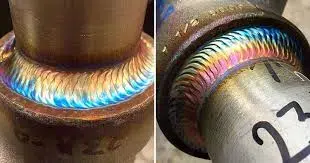
Welding
Welcome to [NDT Inspection Portal]’s welding group, a place for professionals to connect and discuss... View more
TIG (GTAW) Welding
-
TIG (GTAW) Welding
TIG welding, also known as tungsten inert gas welding, is a popular and versatile welding process that is used to join a wide variety of metals, including aluminum, stainless steel, and copper alloys. In this process, a non-consumable tungsten electrode is used to produce the weld, and the area is protected from contamination by a shielding gas, usually argon or helium.
One of the key advantages of TIG welding is its ability to produce high-quality, aesthetically pleasing welds with a smooth, uniform appearance. This is because the process allows for precise control of the weld arc and the heat input, resulting in minimal distortion and less need for post-weld cleaning and finishing. In addition, TIG welding is a relatively clean process, with little spatter or smoke, making it a good choice for applications where cleanliness is important.
TIG welding is a relatively slow process compared to other welding methods, such as MIG welding or stick welding. This is because the welder must manually feed the filler metal into the weld pool using a separate rod. However, the slow process allows for greater control and precision, and skilled TIG welders can produce high-quality welds with a high degree of accuracy and consistency.
To perform TIG welding, the welder must first set up the welding machine and adjust the settings to match the material being welded and the desired welding speed. The welder then attaches the tungsten electrode to the welding machine, and threads the shielding gas hose through the welding torch. Next, the welder must clean the base metal and prepare the surfaces to be welded, ensuring that they are free of dirt, paint, and other contaminants.
Once the welding machine and materials are prepared, the welder can begin the welding process. The welder must strike an arc by touching the tungsten electrode to the base metal and then quickly pulling it away, creating a spark that ignites the shielding gas and begins the welding process. The welder must then maintain a consistent distance between the electrode and the base metal, and adjust the welding speed and heat input to achieve the desired welding results.
TIG welding is a skilled trade that requires a high degree of dexterity and attention to detail. TIG welders must have a thorough understanding of the welding process and the materials being welded, and must be able to make quick and accurate adjustments to the welding machine and the electrode to achieve the desired welding results. TIG welding is often used in industries such as aerospace, automotive, and construction, where high-quality, aesthetically pleasing welds are required.
Sorry, there were no replies found.
Log in to reply.